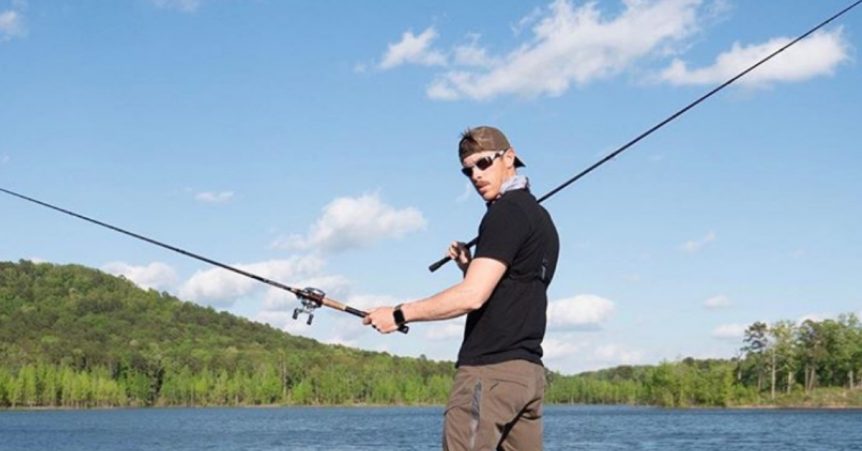Both hollow body frogs and solid plastic toads create plenty of topwater excitement but certain situations and conditions dictate when and where these two lures should be fished.
Fishing pressure can dictate how to select one bait over the other. When fishing pressure is high you need to really slow down your frog presentation to trigger a reaction bite. A hollow body frog is the best option then because it allows you to twitch and pause the lure and let it linger longer in the strike zone.

The Zoom Horny Toad



When To Throw A Toad Vs A Frog
The time of year also determines when to choose a toad or frog. A toad works better earlier in the year from springtime when the fish are starting to move up shallow on to postspawn. Then you can switch over to the hollow body frog during the summertime. You can start throwing the hollow body when the vegetation and pads are fully grown and continue to use the frog until late fall.
The hollow body frog is more of a target-oriented lure for working around isolated cover such as a stump, tree or piling of a dock. The hollow body frog is ideal for fishing cover because you can skip it better and cast it more accurately to targets. You can throw it in thicker cover and walk it, chug it or stop it.
A hollow body frog is also effective in open water or along the edges of weeds where you can retrieve it a variety of ways. You can walk the lure similar to walking a Zara Spook, pop it steadily, hop it out of the water or pause it.
The toad produces better for covering water quickly along vast expanses of weed flats with pad fields or scattered grass. You can cast the toad a lot farther than a hollow body and then just start reeling steadily. The toad also serves as a substitute for a buzz bait if you want a more subtle presentation in open water. So you can use the toad as a search bait and once you find the fish you can slow down and work the cover in the area with the hollow body frog.
The different styles of legs on the toads determine how fast or slow you can effectively work the bait on the surface. A toad with paddle legs can be reeled fast to make a lot of commotion on the surface or retrieved at a slow, steady pace to make it gurgle on top. Experiment with these retrieves and let the fish tell you what they prefer.
Strikes on a frog result in more solid hook sets whereas more misses occur when bass bust a toad. The hookup ratio is worse on toads because of the speed that you are reeling in the bait. You can control how fast you are working the hollow body frog and still have it in the strike zone, whereas you have to keep the toad moving for it to create action. Missed strikes also occur sometimes because grass gets in the way when bass are charging after the toad. The fish open their mouth and hit the grass which hits the toad and knocks it out of the way so they miss it. You get a better hook set with a hollow body frog because most strikes occur when the lure is in the holes of vegetation or open water next to the weeds.
Figuring out when to set the hook with a frog or toad is a matter of timing. You can use a sweeping hook set with a frog even though your rod is usually positioned closer to the water while working the lure. Set the hook immediately when a bass engulfs your frog in open water, but wait until you feel the weight of the fish on your line before setting the hook when a bass strikes in thick grass.
When walking a hollow body frog, make sure the frog has disappeared after a bass strikes and then quickly reel the slack out of your line before setting the hook. You should also delay your hook set after a slurp bite, which occurs when a bass slurps up the frog without creating a surface disturbance.
A delayed hook set also ensures better connections when you wind in a toad. When a bass bites the toad you should crank down two or three times on the reel and then you set the hook with a hard jerk of the rod. If bass continues to short strike the toad, switch to the frog for a slower presentation so the fish can catch up to the lure easier.
Fished in the right situations, both the frog and toad can provide a lot of topwater fun in open water or around cover.


